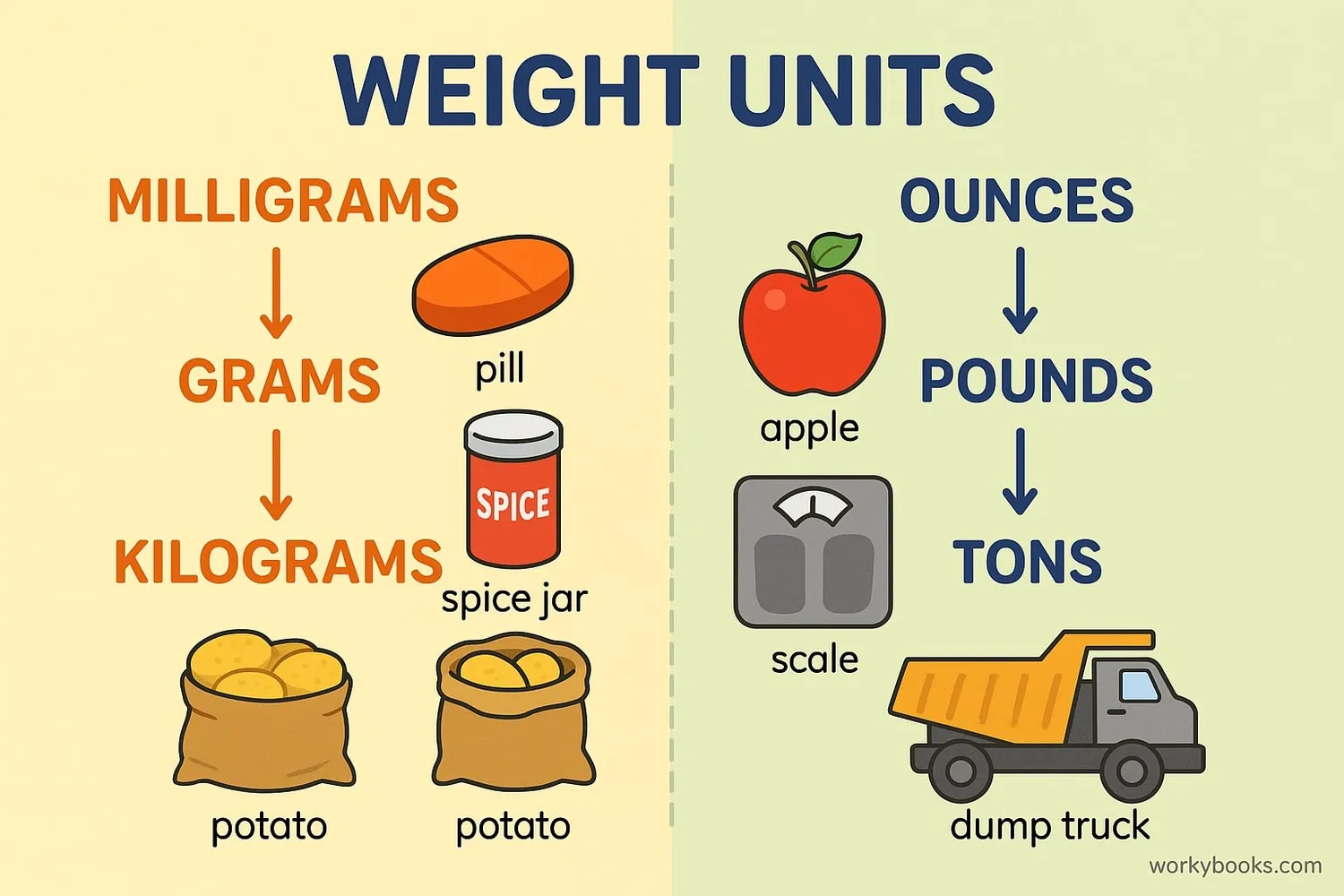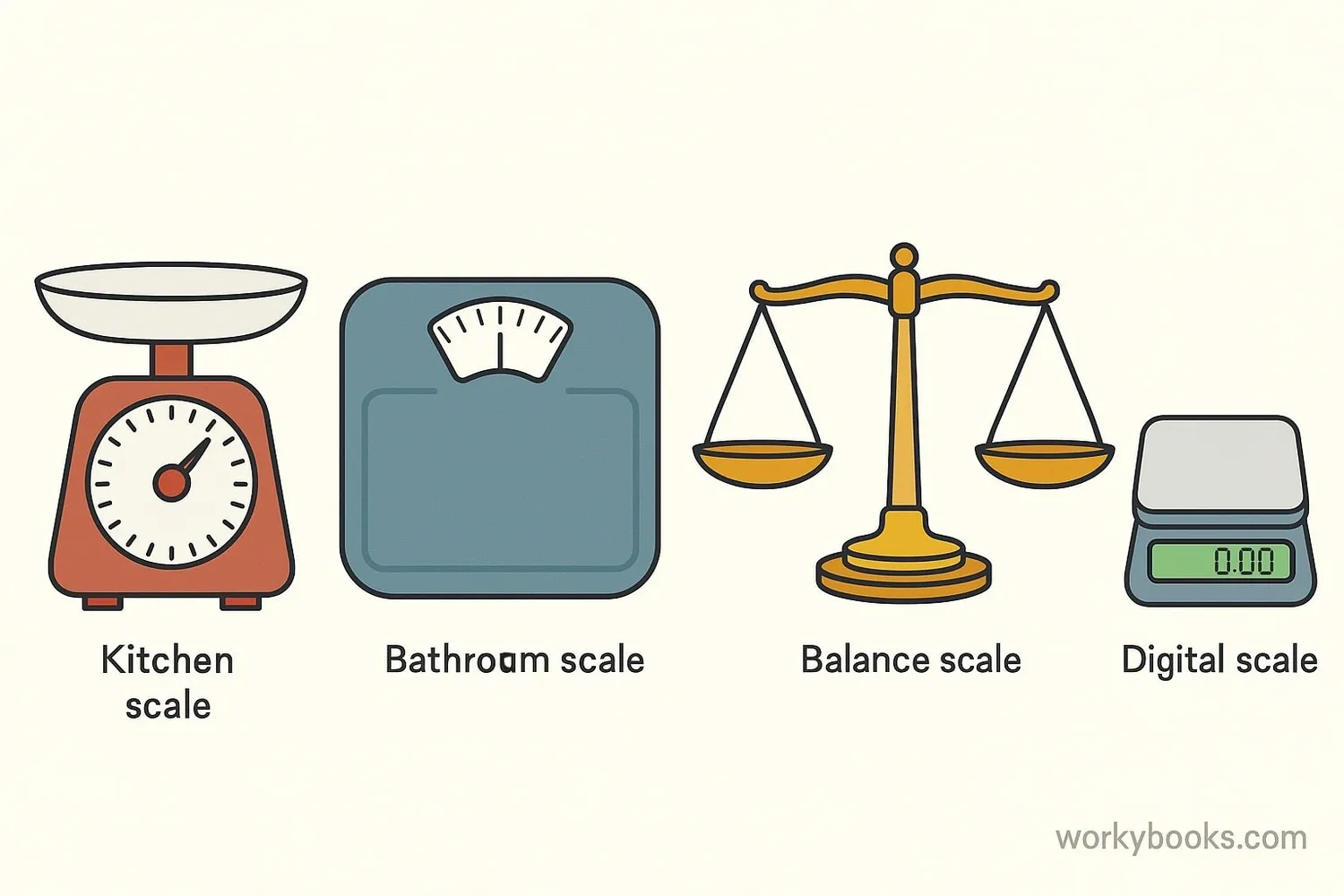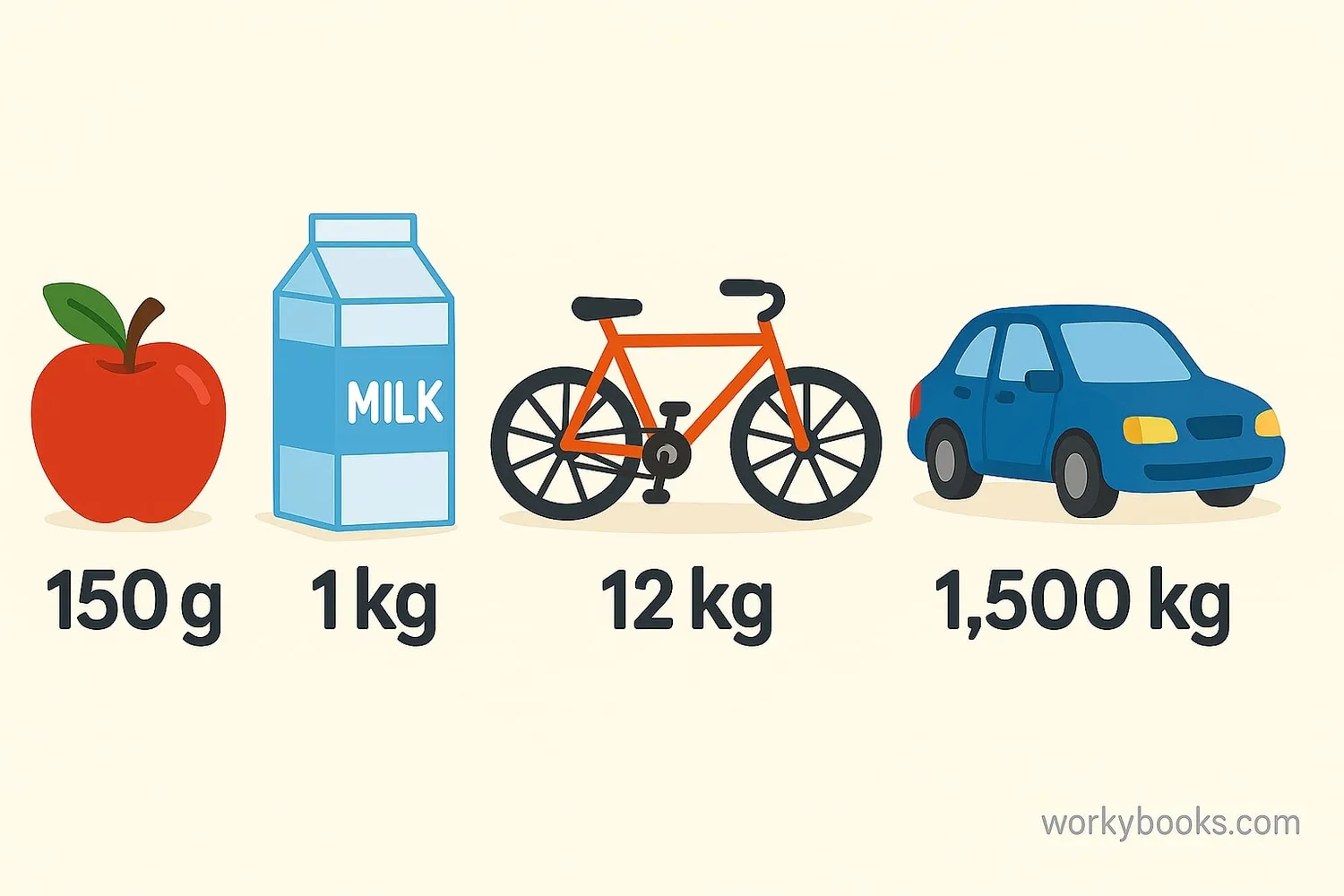Weight - Definition, Examples, Quiz, FAQ, Trivia
Learn about units of weight, how to measure, and convert between different systems
What is Weight?

Weight is the measure of how heavy something is. When we weigh things, we're finding out how much gravity is pulling on them.
Think about holding a feather and a book. The book feels heavier because it has more weight. Weight is different from size - a big balloon might be lighter than a small rock!
We measure weight using units like grams and pounds. The main difference between weight and mass is that weight can change depending on gravity (like on the Moon), while mass stays the same.
Key Concept
Weight measures how heavy something is, while mass measures how much matter it contains.
Units of Weight

There are two main systems for measuring weight: the metric system and the customary system.
Metric Units:
- Milligram (mg) - Very light things (a grain of sand)
- Gram (g) - Small things (a paperclip weighs about 1g)
- Kilogram (kg) - Heavier things (a bag of sugar weighs 1kg)
- Tonne (t) - Very heavy things (a small car weighs about 1 tonne)
- Ounce (oz) - Small weights (a slice of bread)
- Pound (lb) - Everyday weights (a loaf of bread weighs about 1lb)
- Ton (T) - Very heavy weights (a small truck weighs about 1 ton)
Remember
There are 1,000 grams in a kilogram and 16 ounces in a pound. Knowing these relationships helps with conversions!
Measuring Weight

We use special tools called scales to measure weight. There are different types:
Balance Scales: These have two sides. You put the object on one side and weights on the other until they balance.
Spring Scales: These use a spring that stretches when you hang something from it. The heavier the object, the more the spring stretches.
Digital Scales: These show the weight on a screen. They're very precise and easy to read.
When using a scale, make sure it's on a flat surface and set to zero before you start measuring. Always read the measurement at eye level for accuracy.
Measurement Tip
For small objects, use grams or ounces. For people, use kilograms or pounds. For very heavy things, use tons or tonnes.
Conversion of Units
Converting between weight units is like translating between different measurement languages. Here are the basic conversion rules:
Metric Conversions
Customary Conversions
Between Systems
Weight Conversion Chart
| Metric | Customary |
|---|---|
| 1 gram | 0.035 ounces |
| 100 grams | 3.5 ounces |
| 500 grams | 1.1 pounds |
| 1 kilogram | 2.2 pounds |
| 5 kilograms | 11 pounds |
| 1 tonne | 1.1 tons |
Real-World Examples

Let's look at weight in everyday life:
Example 1: An apple weighs about 150 grams. That's the same as 0.15 kilograms or about 5.3 ounces.
Example 2: A bag of sugar weighs 1 kilogram. How many grams is that? (1,000 grams)
Example 3: A bicycle weighs about 12 kilograms. Convert this to pounds. (12 × 2.2 = 26.4 pounds)
Example 4: A newborn baby might weigh 7 pounds. How many grams is this? (7 × 454 = 3,178 grams)
Example 5: An elephant weighs about 5 tonnes. How many kilograms is that? (5 × 1,000 = 5,000 kg)
Practice Tip
Try weighing objects at home and converting their weights to different units. This helps you understand weight better!
Weight Measurement Quiz
Test your knowledge about weight measurement with this 5-question quiz. Choose the correct answer for each question.
Frequently Asked Questions
Here are answers to common questions about weight measurement:
Weight Measurement Trivia
Discover interesting facts about weight and measurement:
Ancient Measurements
The earliest known weight measurements date back to 2400 BC in Egypt. People used stones and seeds as standard weights for trade.
Weight in Space
Astronauts in space experience weightlessness because they're in freefall around the Earth. Their mass stays the same, but they have no measurable weight!
Heaviest Animal
The blue whale is the heaviest animal ever known, weighing up to 200 tons (about 181,437 kg). That's heavier than 30 elephants!
Tiny Measurements
A single grain of table salt weighs about 0.00006 grams. Modern scientific instruments can measure weights as small as a yoctogram (0.000000000000000000000001 grams)!





